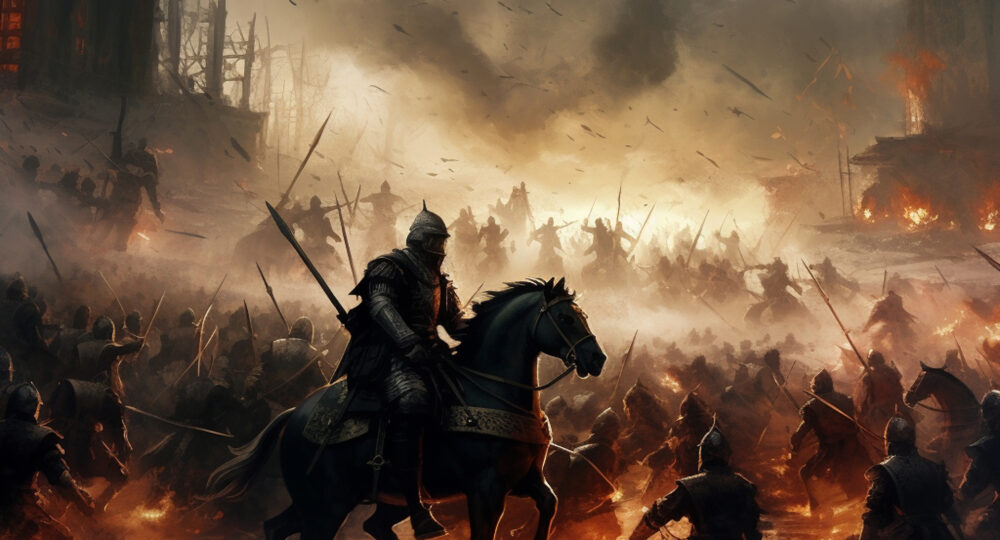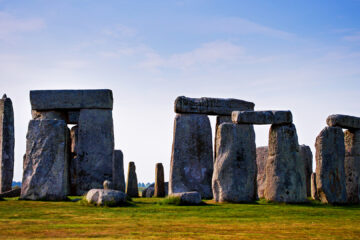
The Art of War in Ancient Cultures: Comprehending Military Conventions of Early Societies
Historical records are replete with tales of conquest and defence, strategies and sieges, showcasing the profound impact of military prowess on the development of ancient civilisations. From the disciplined legions of Rome to the guileful strategy of ancient China, the chronicles reveal how warfare shaped borders and forged the cultural and societal norms of these empires. The canvas of ancient warfare is vast and varied, painted by different cultures, each with its unique brushstrokes of strategy, weaponry, and tactics.
The Organised Militarism of the Mesopotamians
In the fertile crescent of Mesopotamia, ancient civilisations like the Sumerians, Akkadians, Babylonians, and Assyrians laid the foundations of organised militarism. The Mesopotamians were among the first to use chariots, enhancing their mobility on the battlefield. They also developed sophisticated siege techniques, including the use of battering rams and siege towers, to conquer walled cities.
The Mesopotamian military structure was marked by a clear hierarchy and division of troops into infantry, charioteers, and cavalry, each with specialised roles. Their warfare was methodical, emphasising discipline and the efficient use of resources.
The Massive Army of the Egyptians
The Egyptian civilisation, flourishing along the Nile, had a military history as monumental as its pyramids. The Egyptians were among the early adopters of chariots, which they used effectively in large-scale battles. Their military campaigns were often grand, aimed at displaying the pharaoh’s power and securing the wealth of neighbouring lands.
The Egyptian army was well-organised, with a professional core supplemented by conscripts and mercenaries. Their weaponry included bows, spears, shields, swords, and axes. The Egyptians also demonstrated prowess in naval warfare, using ships for transport and combat along the Nile and the Mediterranean.
The Diverse Warfare of the Ancient Greeks
The Ancient Greeks, particularly the Spartans and Athenians, offered a different perspective on warfare. The Greek phalanx, a tightly-knit formation of heavily armed foot soldiers (hoplites), was a formidable force in close combat. The strength of the phalanx lay in its unity and discipline, with each soldier’s shield protecting himself and his neighbour.
The Greeks also excelled in naval warfare, with the Athenians, in particular, demonstrating superior seamanship. The trireme, a fast and agile warship, symbolised Athenian maritime power. In battles like Salamis, the Athenians showcased their tactical brilliance, using their naval skills to defeat larger Persian fleets.
The Complex Warfare of the Mayans
In the dense jungles of Mesoamerica, the Mayans developed a form of warfare that was as complex as their calendar system. Mayan action, often driven by the desire for territorial expansion and the capture of prisoners for religious sacrifice, was characterised by guerrilla-style tactics suited to the dense rainforest environment. They used ambushes and sudden, ferocious assaults, leveraging their intimate knowledge of the terrain.
The Mayans lacked metal for weaponry, relying instead on obsidian and flint for making sharp-edged weapons and projectiles. Their warfare did not revolve around massive standing armies but on smaller, agile units that could quickly mobilise and disperse in the thick jungle terrain.
The Strategic Mastery of Ancient Rome
In the West, the Roman Empire is a colossus of military strategy. Renowned for their tactical acumen, Roman generals masterminded some of history’s most formidable campaigns. Their success hinged on the famed Roman discipline and the legions’ remarkable adaptability. Roman warfare evolved from early phalanx formations, inspired by Greek models, to the more flexible manipular formations, allowing for greater mobility and responsiveness on the battlefield.
The Roman military machine was not just about numbers but precision, structure, and efficiency. Implementing well-planned logistics, including constructing roads and forts, ensured sustained campaigns far from home. Furthermore, the Romans excelled in siege warfare, developing advanced machines like ballistae and onagers, which enabled them to breach the fortifications of their adversaries.
The Tactical Ingenuity of Ancient China
In the East, Ancient China’s approach to warfare, as epitomised in Sun Tzu’s “The Art of War,” was profoundly philosophical and strategic. Chinese military thought emphasised the importance of understanding the enemy and using deception and intelligence to gain advantages. This mindset transcended into their military tactics, which often involved ambushes, feigned retreats, and psychological warfare, aiming to outwit the opponent rather than relying solely on brute force.
Weaponry in ancient China also reflected their strategic ingenuity. The crossbow, for instance, was a game-changer in ancient Chinese warfare, offering a level of ease and lethality not seen in contemporary Western armaments. Although not fully utilised in combat until later centuries, the invention of gunpowder marked another testament to their innovative spirit.
Studying ancient military strategies, weaponry, and tactics reveals innovation, bravery, and strategic thinking. Each civilisation’s approach to warfare reflected its societal values, technological advancements, and strategic priorities, vividly depicting the diverse and ingenious ways of waging war. The early civilisations, shaped by their geography and cultures, offer unique insights into their preparations and engagement for battles.
Additional facts: The Indus Valley Civilization, sprawling across modern-day Pakistan and India, remains a mystery due to its undeciphered script. However, archaeological evidence suggests a society that was more peaceful than its contemporaries. The lack of fortifications in many Indus Valley cities and the paucity of weapons in archaeological sites indicate a civilisation where warfare was not a dominant aspect of life. Little is known about their potential military tactics from a few depictions of spears and bows, suggesting a rudimentary knowledge of these weapons. The Indus Valley Civilization’s contribution to ancient warfare seems to lean more towards strategic urban planning and possibly economic dominance rather than military conquest.









